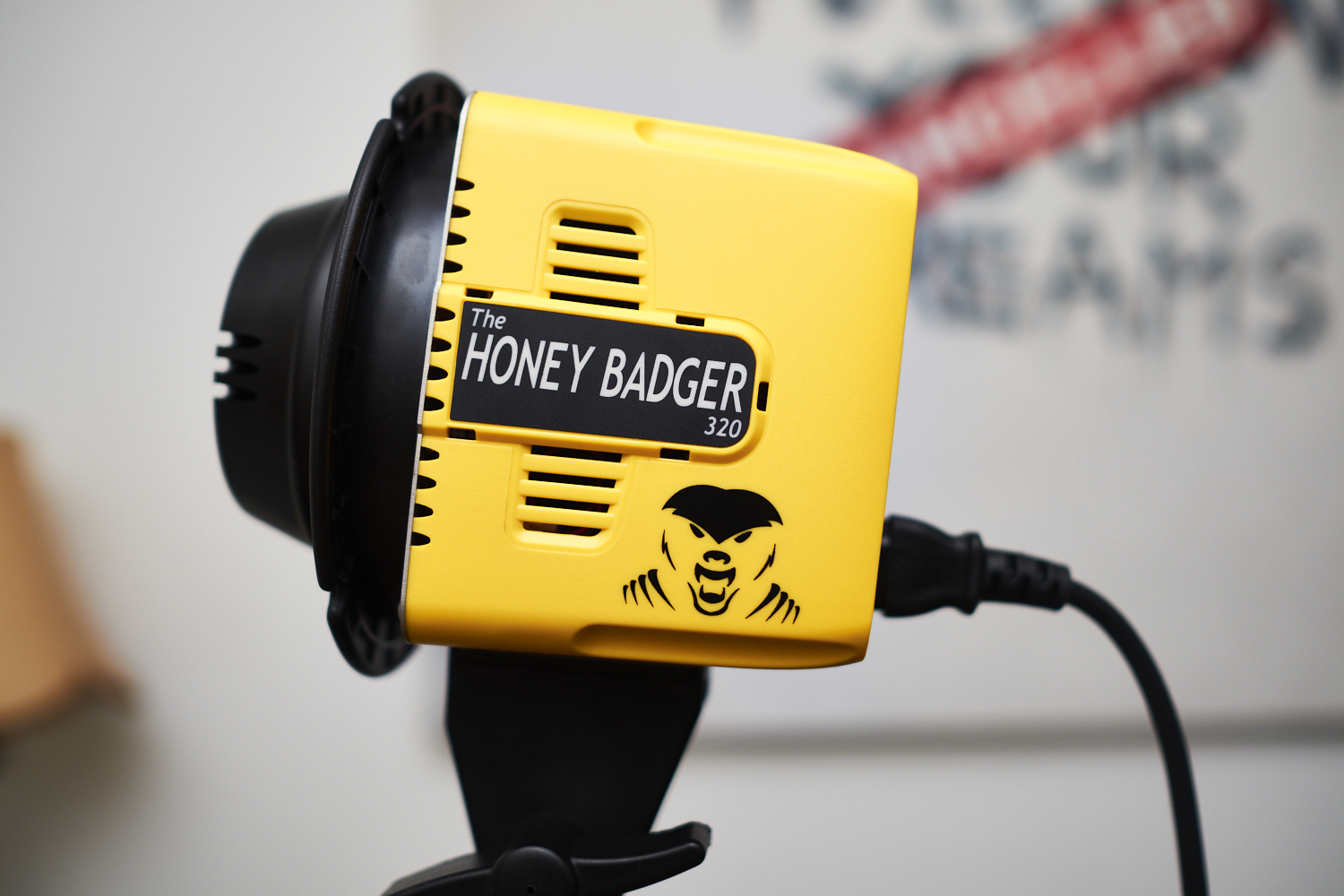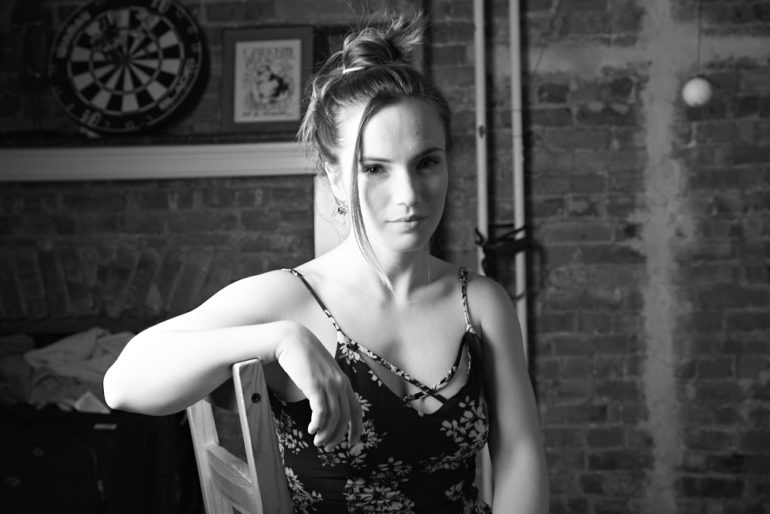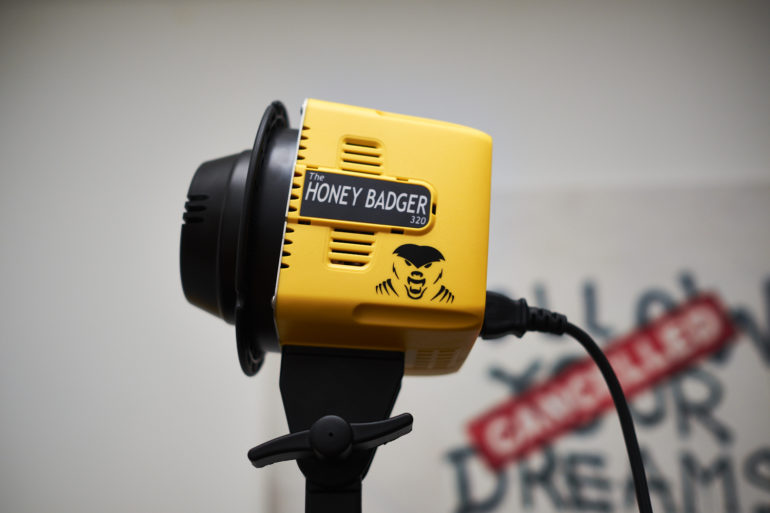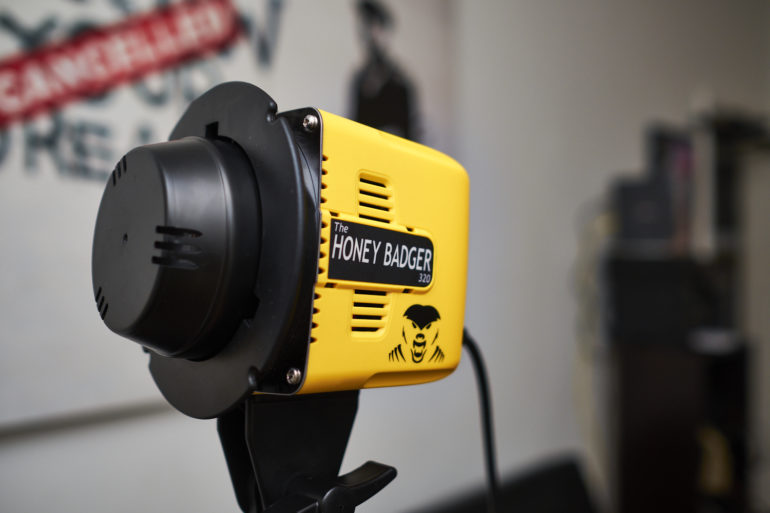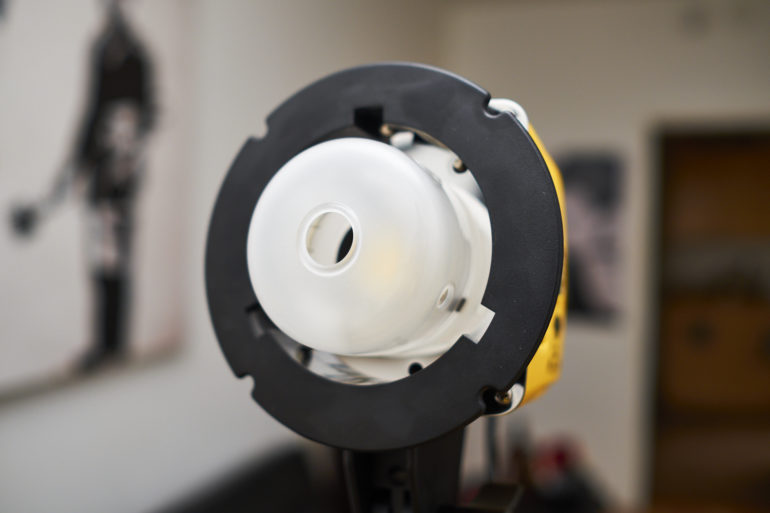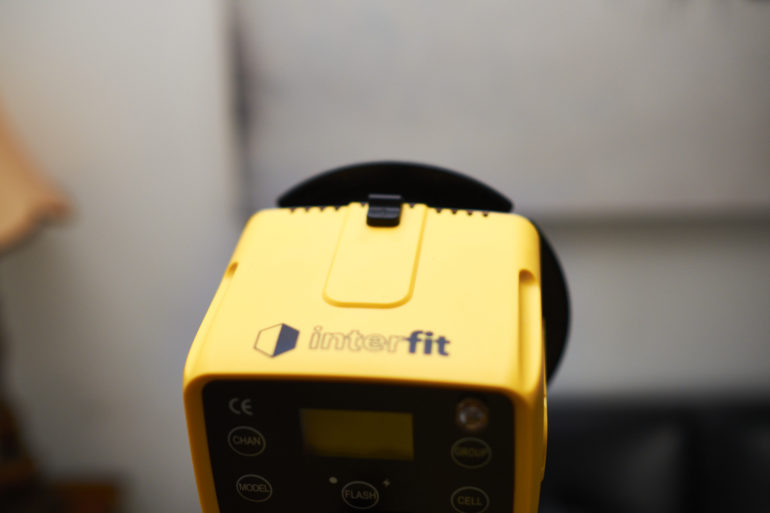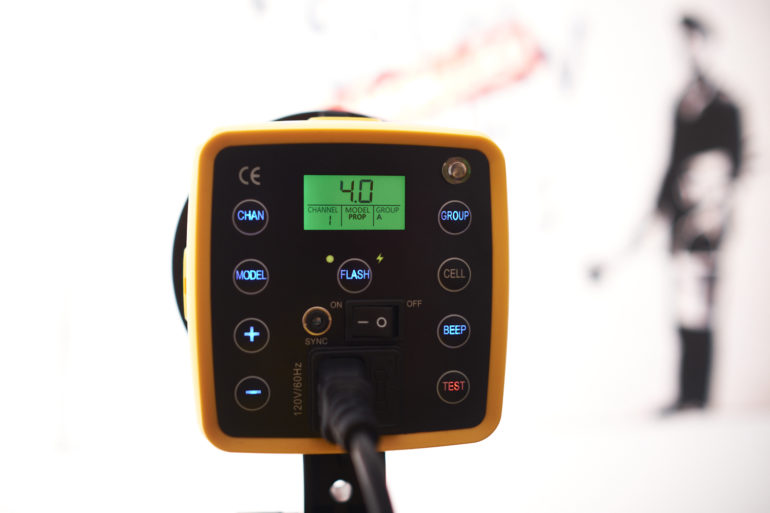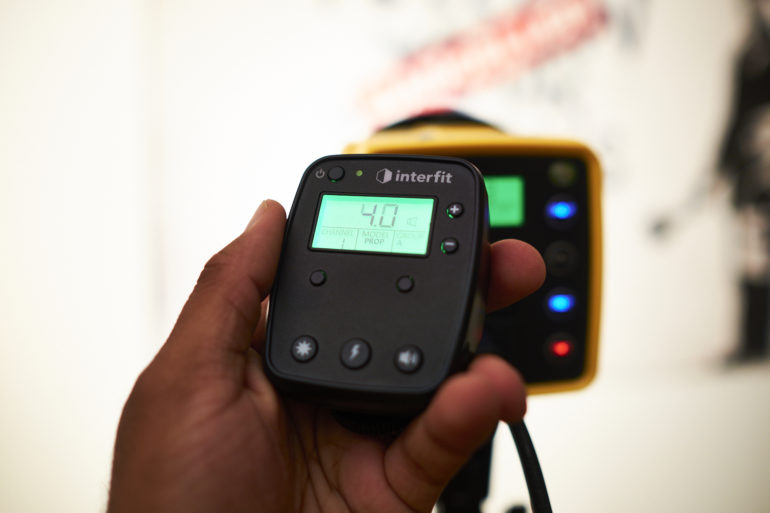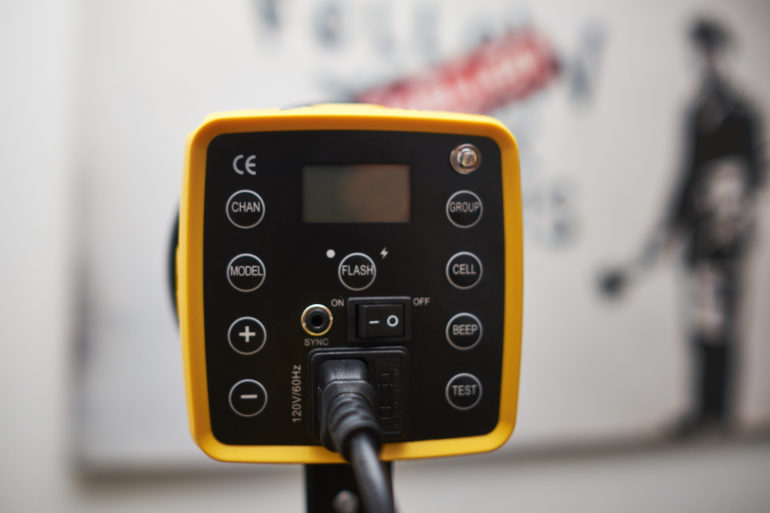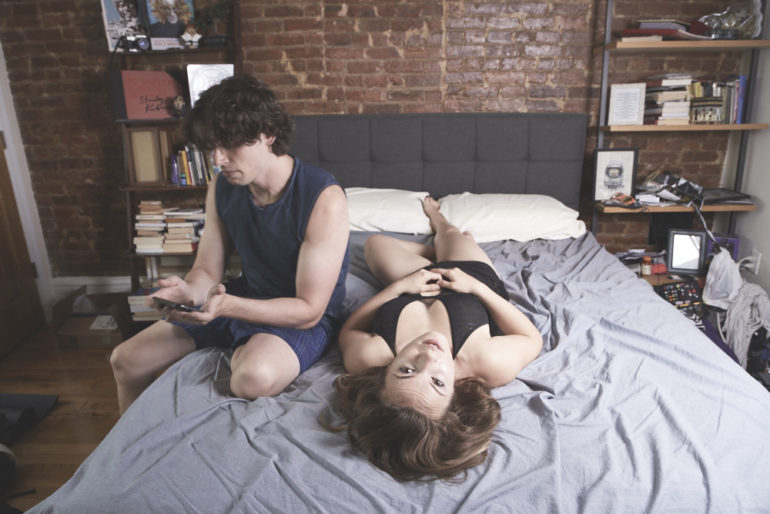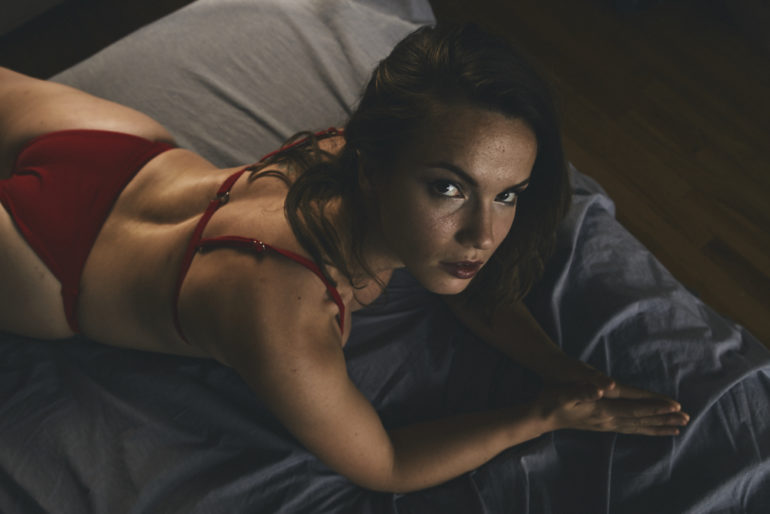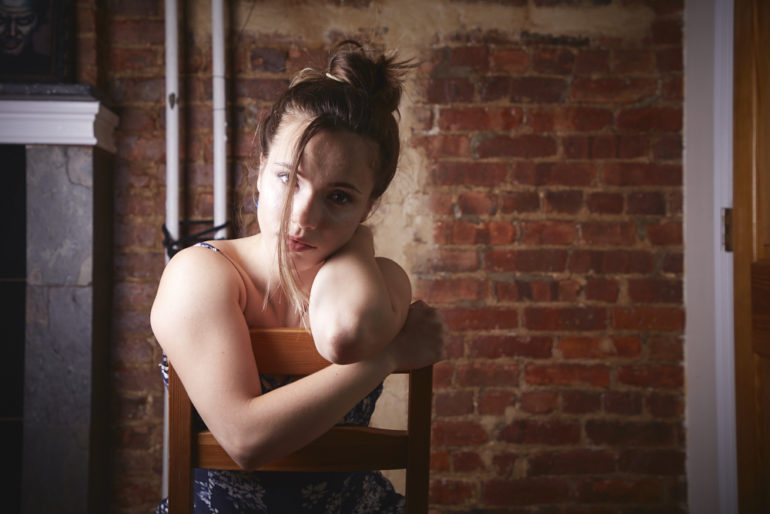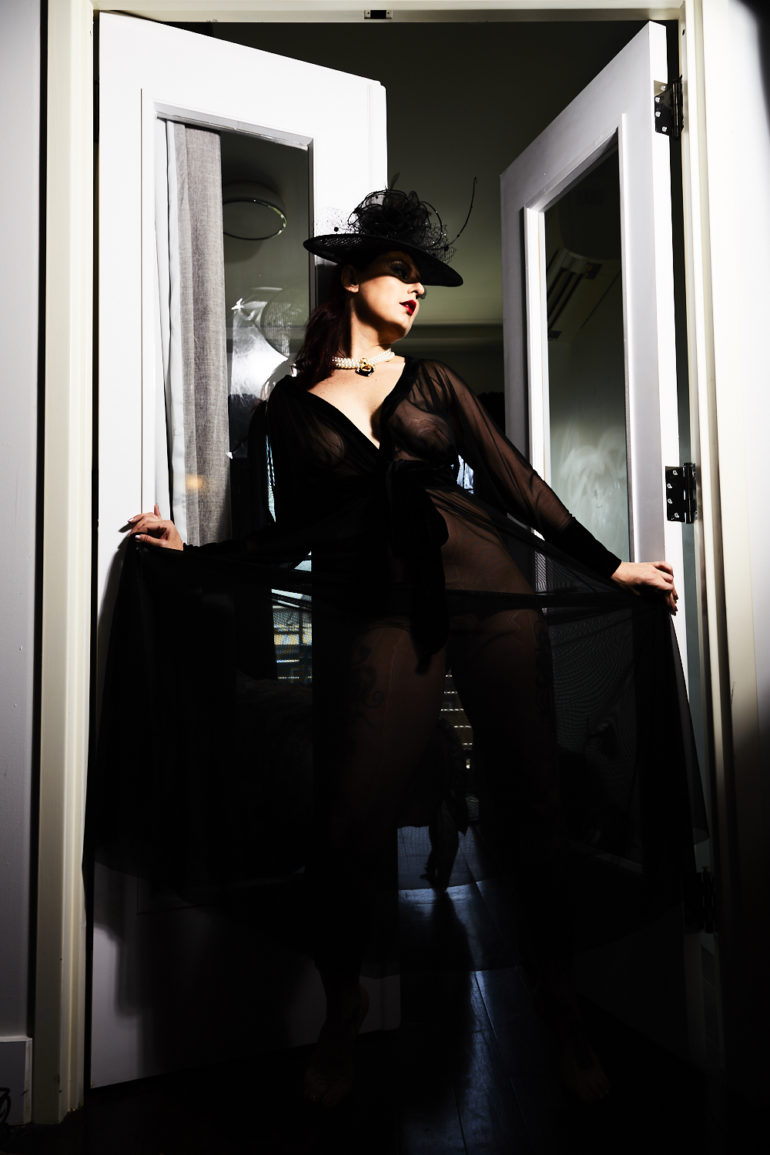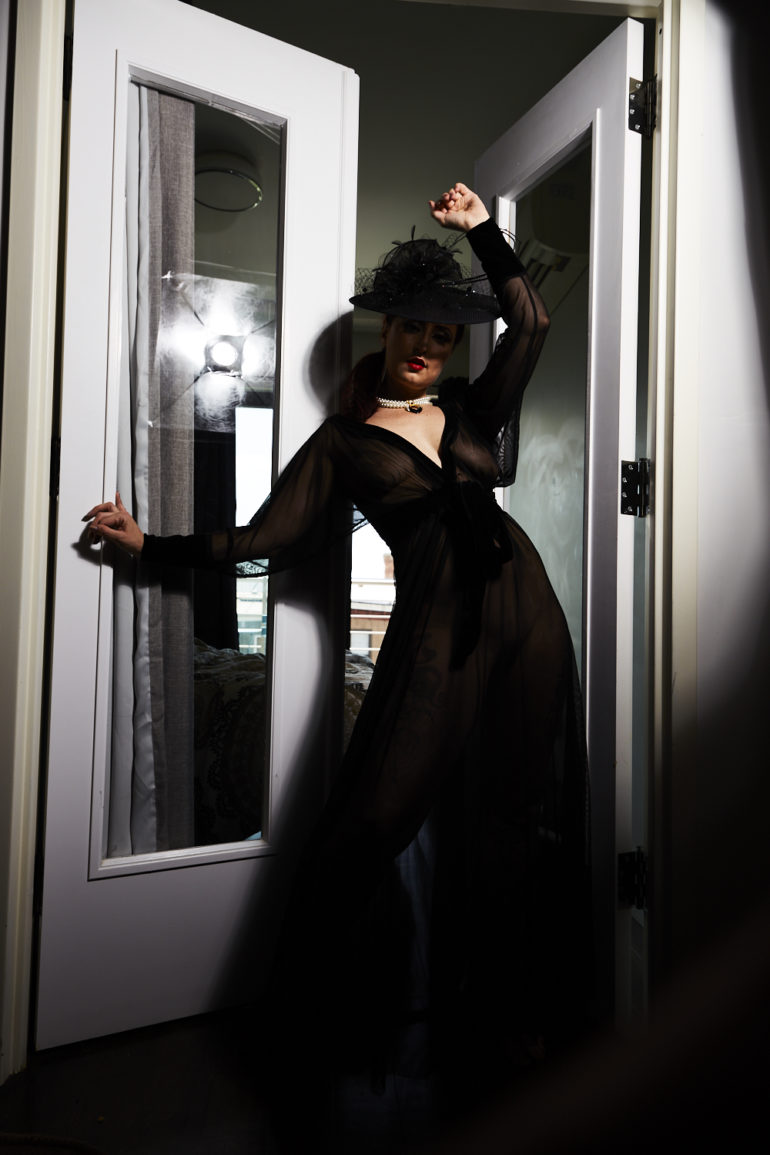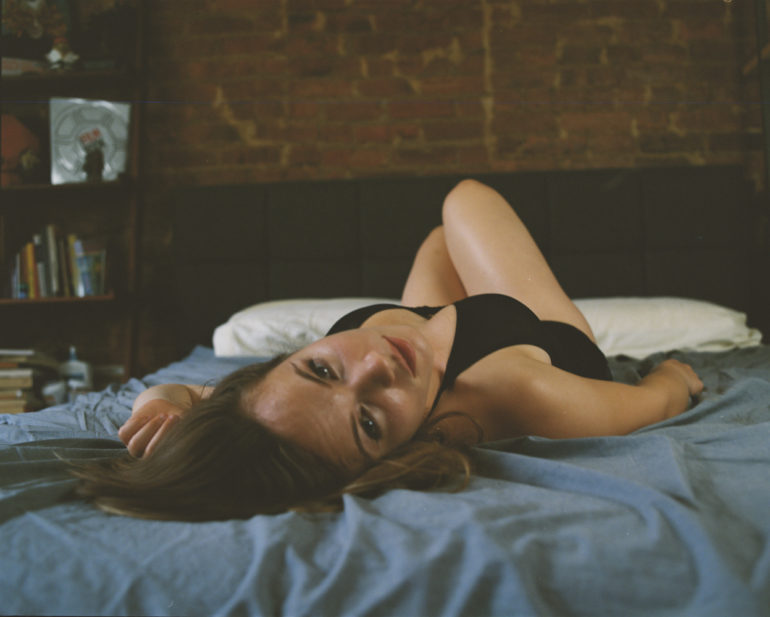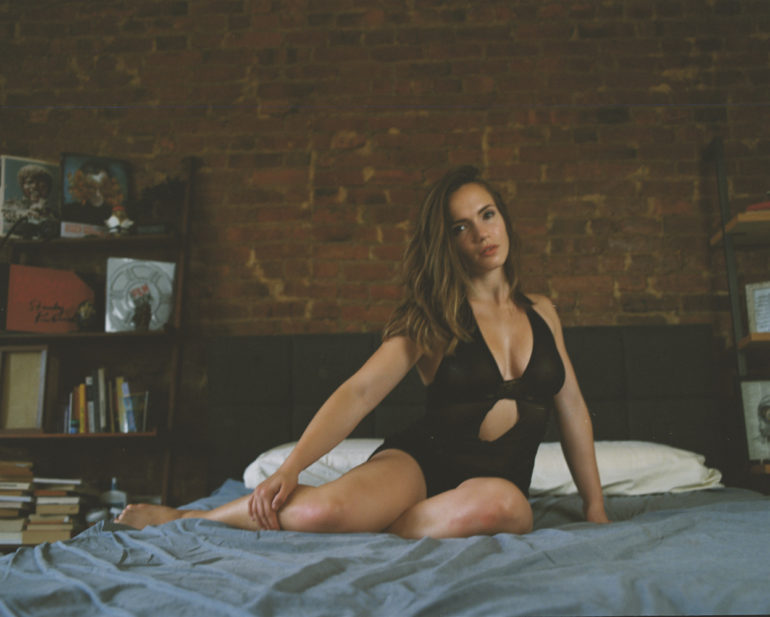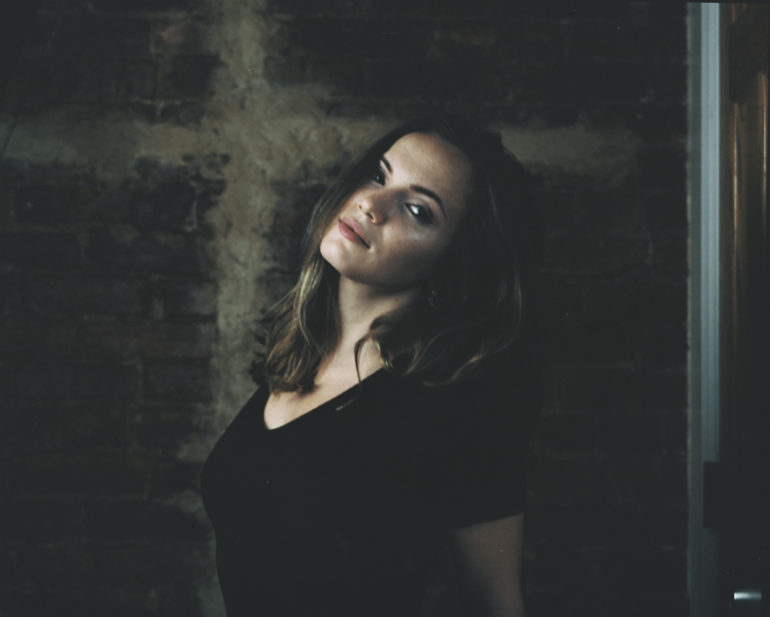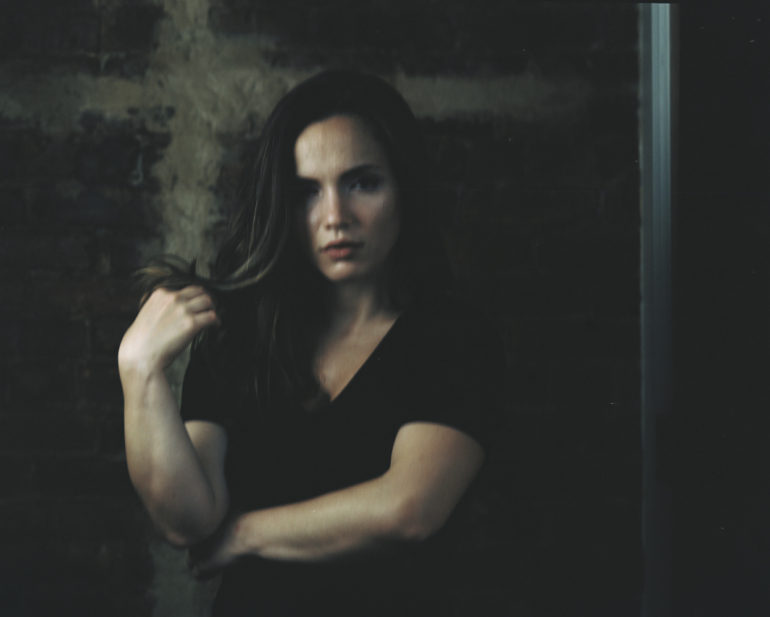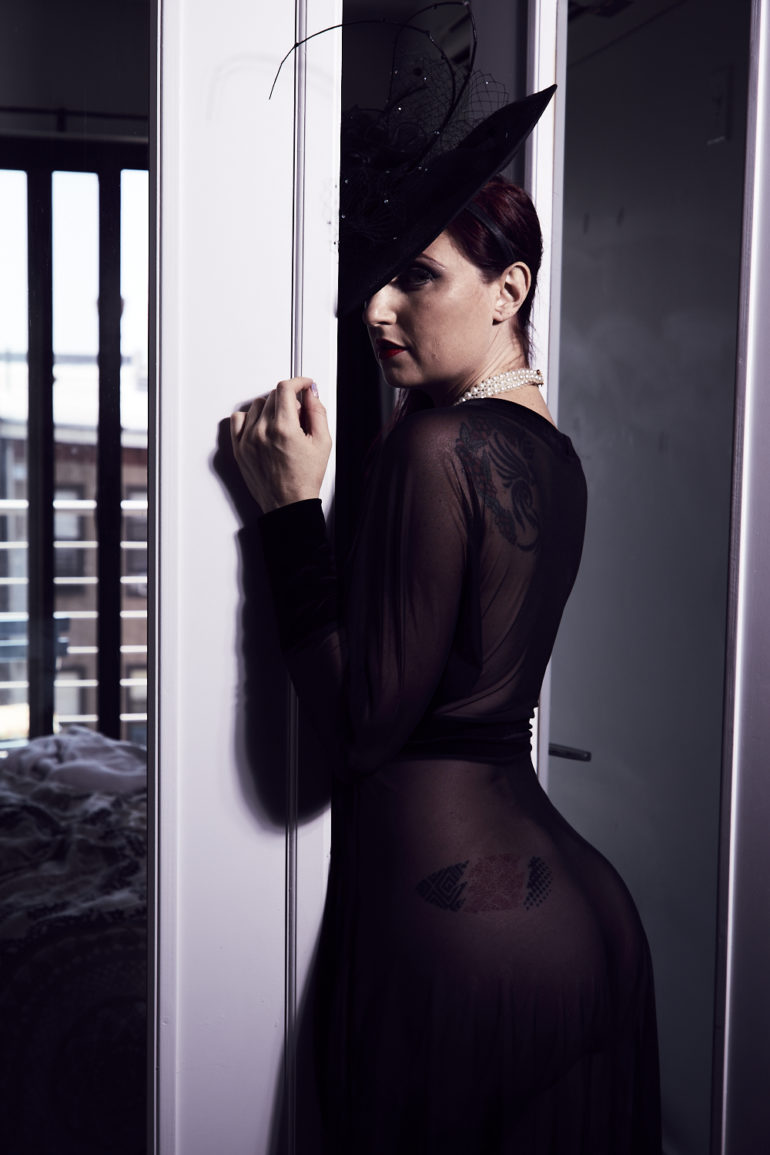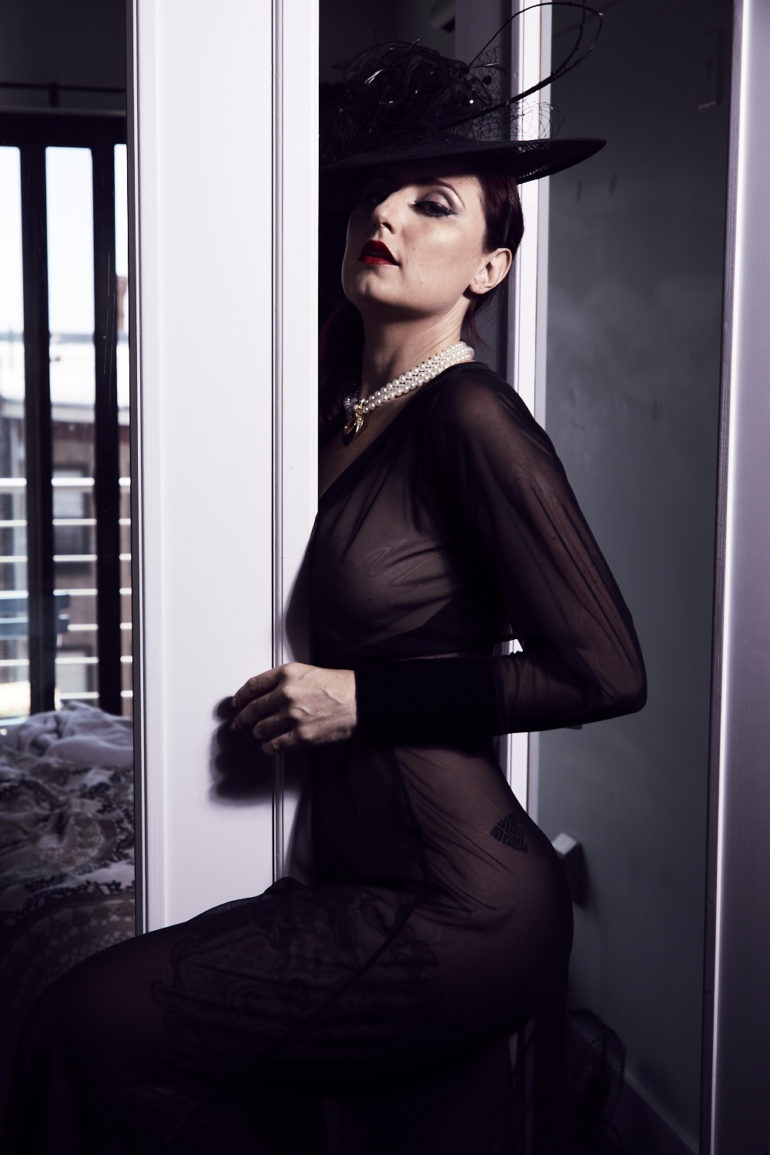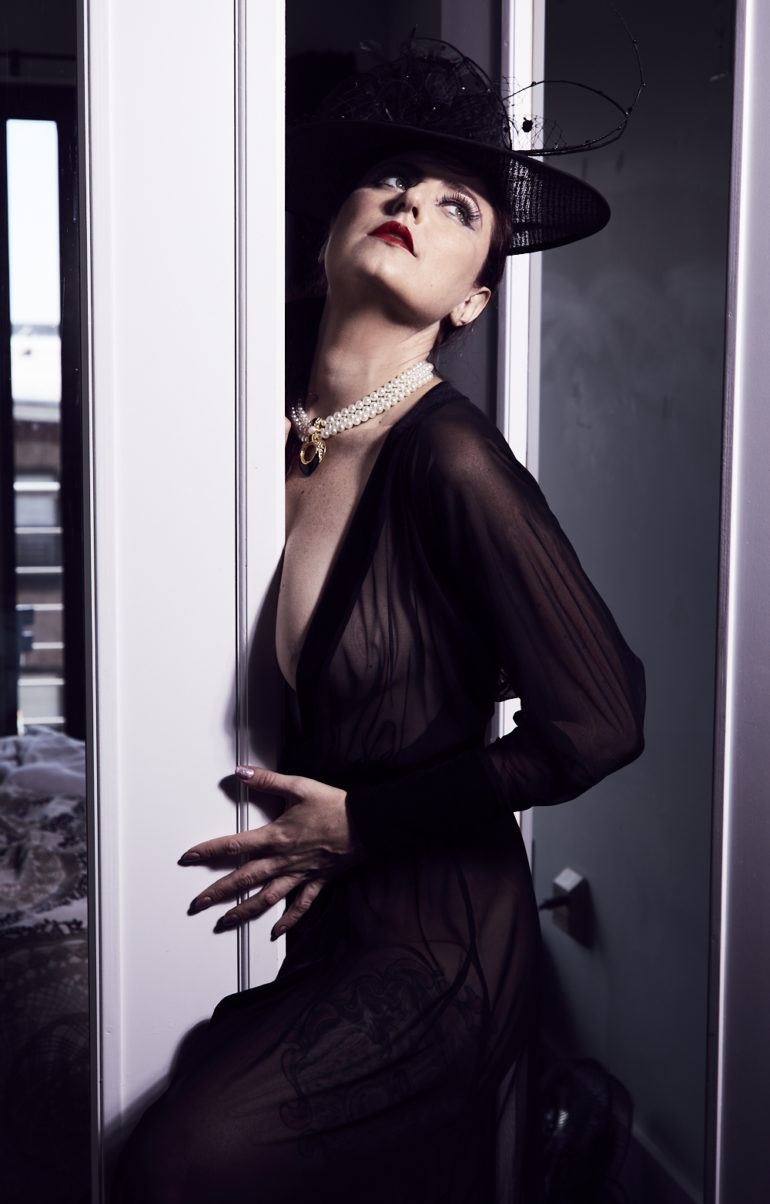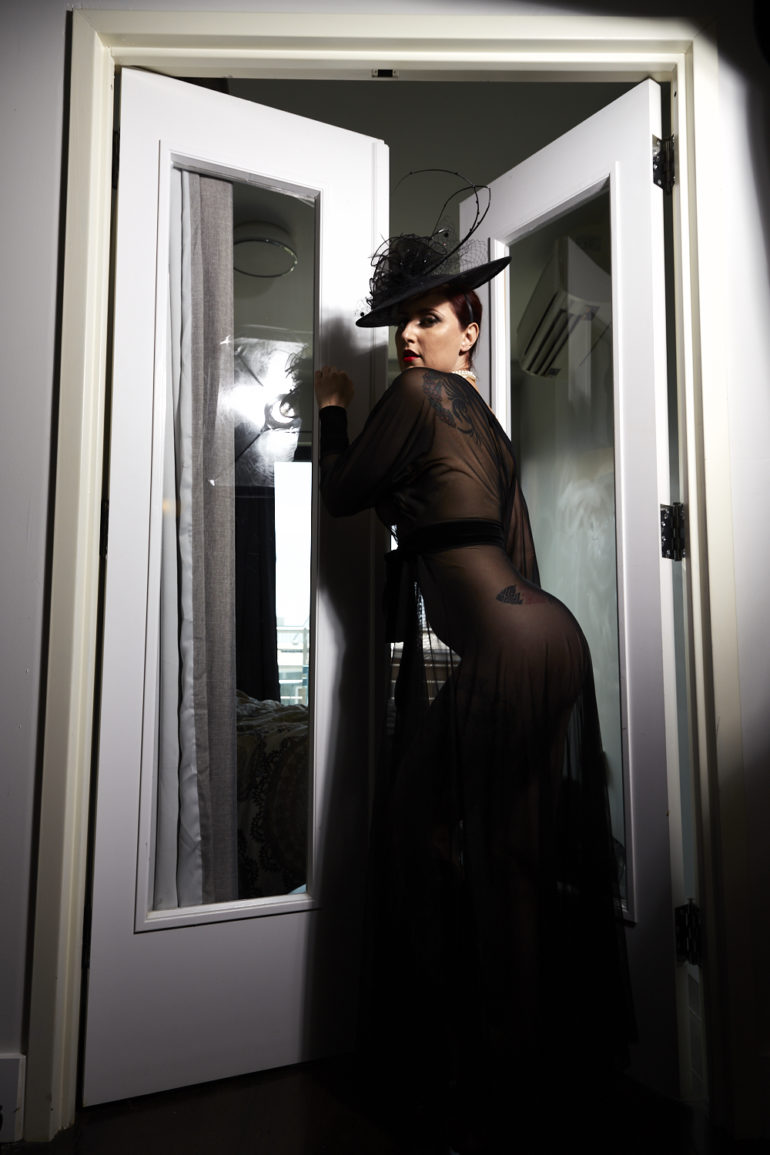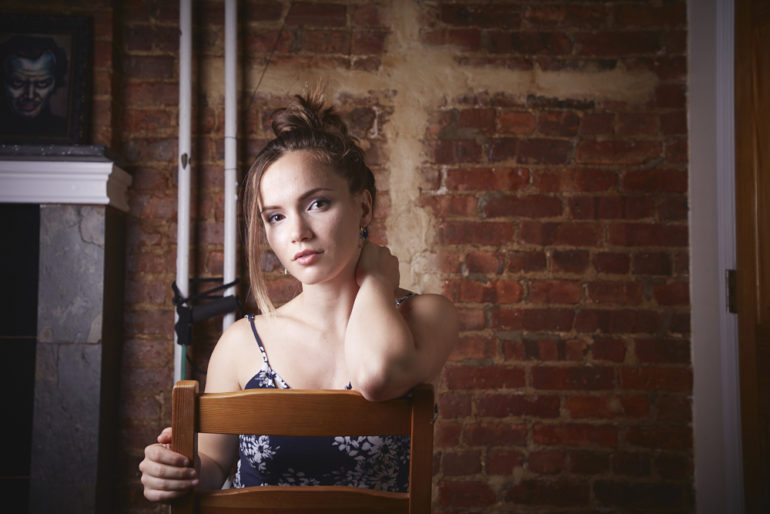Last Updated on 08/02/2017 by Chris Gampat
Today, Interfit is announcing their new Interfit Honey Badger Monolight that is designed to function as an affordable option for someone that needs both a monolight and a constant light. In fact, we’re talking about a $299 price point with a softbox included. Now, the Interfit Honey Badger doesn’t have a built in battery–which would put it over the top. But if you’re right by a power source it shouldn’t be that difficult to work with. Instead, the Interfit Honey Badger will appeal most to the photographers who work in a given studio location that doesn’t really change vs those who do location work. To add extra value to the Interfit Honey Badger the light can be controlled with their transmitter wirelessly and also act as a constant light. It doesn’t offer TTL output and only has a flash duration of 1/900th; but if you’re shooting in a studio then you’re doing everything you can to control the light output as it is.
So let’s dive into this review.
Pros and Cons
Pros
- Not too large
- Not at all heavy
- Feels good–pretty much like the Paul C Buff Einstein E640 light
- Intuitive controls
- Lighter than some camera and lens combinations
- Affordable
- Included softbox is good
Cons
- Doesn’t go below 4.0 when it comes to power. This was to keep the price tag down due to the way capacitors work.
- It would be nice if the constant modelling light could be controlled in 1/10th increments like the flash can be.
- Build quality on the included softbox is a bit questionable.
- No real way to lock an umbrella into the umbrella hole.
Gear Used
We tested the Interfit Honey Badger with the Transmitter, the Canon 6D, Canon 24-105mm f4 L IS USM II, Pentax 67, Pentax 45mm f4 for the 67 format system, Pentax 105mm f2.4 for the 67 format system, Kodak Portra 160, Lomography 400 Negative, Lomography 100 Earl Grey, Lumu Power light meter for the iPhone and the Fujifilm X Pro 2 with the 23mm f1.4 R.
Tech Specs
Specs taken from the Press release
|
Max Watt Seconds |
320Ws |
|
Power Range |
7 Stops (320Ws – 5Ws) |
|
Guide Number *100 ISO, 1/125, 1m, 7” reflector |
148’ (f45) |
|
Flash Variability |
1/10th Stop increments |
|
Recycle Time |
1 second @ full power |
|
Flash Duration (t.1) |
1/900 @ full power |
|
Color Temperature |
5600K +/- 200K |
|
Modeling Lamp |
60w LED, 5600K |
|
Wireless Control |
Compatible with all Interfit S1 remotes |
|
Max Sync Speed |
1/250 |
|
Operating Voltage |
110VAC or 220VAC (not multi-voltage) |
|
Fan Cooled |
Yes |
|
Auto Power Dump |
Yes |
|
Temperature Regulation |
Yes |
|
Umbrella Mount |
Fits umbrellas up to 8mm |
|
Dimensions |
5x5x6” |
|
Weight |
3lb |
|
Included Softbox |
24” Pop-up w/diffusers |
|
Modifier Mount |
Bowens® S-Type with Pop-up softbox ring |
Ergonomics
The Interfit Honey Badger is a nice, small monolight. It’s characterized by a bold yellow design which is unlike others I’ve seen that otherwise just use black. But this is a welcome and refreshing sort of design change. Here you can see it with the speed ring for the softbox attached plus with the cap on. This is the side of the Interfit Honey Badger and those ports are fans that keep the internal mechanisms nice and cool.
The Interfit Honey Badger is Bowens mount. For many photographers that will mean a whole lot. But for others, you may only care about the Umbrella ring slot. Unfortunately, it doesn’t have a way to lock the umbrella in.
When the cap for the Interfit Honey Badger comes off, you’ll see this frosted dome. This keeps the light output soft, sort of. The dome and the bulbs interact to make the white balance of the light set to 5600K, which is a bit warmer than standard daylight at 5500k. But with that said, you may like what this light does with warming up skin tones.
Up top, you’ll spot the release for the cap and therefore for attachments that may fit onto the Interfit Honey Badger.
Move to the rear of the Interfit Honey Badger and what you’ll find are these controls. They’re all very, very incredibly simple. Nothing complicated.
Here’s a cool tip, this product image was shot with the light itself.
The transmitter for the Interfit Honey Badger is equally as simple. See how little controls there are?
Build Quality
The Interfit Honey Badger isn’t build as well as the company’s S1 monolight, the Einstein, Profoto Lights or even Adorama’s Flashpoint series. But with all that said, it isn’t terribly built at all. It’s still pretty good, but the exterior has a lot of plastic associated with it. That’s how you keep the price point down.
Either way, what’s important is that when I’m transporting the light in and out of messenger bags, going up and down stairs, going in and out of cars, the lights haven’t degraded. They’ve been roughed around a bit and have had no problems functioning.
Ease of Use
Where the Interfit Honey Badger takes the cake is with its really simple ease of use. Want to change the channel? There’s a button. Flash or no flash? You can press a button. What about turning off that beeping noise to let you know when it has recycled? You can do that too. The transmitter lets you control most of those just as easily.
This FARRRRRRRRRR outdoes Profoto, Flashpoint, Phottix, Elinchrom, Paul C Buff, etc. In fact, this is the simplest monolight I’ve ever used.
Image Quality
The image quality from the Interfit Honey Badger is pretty darned good. Granted, most people will not be able to look at the photos and tell you’re shooting with an interfit, Profoto, Elinchrom, or Paul C Buff light. The truth about the flash world is that mostly everyone still edits their photos, even though they’re striving to get their images as perfect in-camera as they can.
What fascinated me the most is the 5600K daylight output and the 1/900th flash duration. No, this flash doesn’t have high speed sync; so with that said you’re not really going to get anywhere thinking you’ll be able to overpower the sun with this monolight. Instead, you’ll really just be working with this light indoors.
The Interfit Honey Badger is designed for portraiture, video, product photography and the other very standard and traditional photography needs a monolight was designed to fulfill. I don’t see myself using it at a wedding; but I surely will for a studio portrait session.
Constant Light/Modelling Light
The constant and modelling light from the Interfit Honey Badger can be used quite effectively. Here it is being feathered off both camera right and left. I was using two of the lights and got this look. Of course though, it can be significantly more powerful if you crank the power up for video use. In fact, it could easily be my new video light of choice in my office.
Flash Output
If you’re using flash then know that you’re working with 360 watt seconds of power. That’s like taking four to six speedlights and cramming them into a light for $299 with a softbox. Granted, you can’t go below 4.0 on the power scale. So if you were to take 360 and divide 10 you’ll get 36 then multiply by 4 and you’ll get 144. That’s a whole lot of light. With that said, the light gets diffused by bouncing it off a wall, using the constant light or using the included softbox. It’s highly recommended to use a light modifier of some sort as this light doesn’t come with an umbrella reflector.
Personally, I really love just using the umbrella reflector of any monolight and hope that it includes a frosted glass diffuser. But that isn’t the case here. With 144 watt seconds of power, you’ll be stopping down your lens, lowering your ISO and finding ways to diffuse the light more.
Color Temperature
The Interfit Honey Badger uses output that is 5600K. If you’re a person who shoots with auto white balance, please move on from this section and the next. But for the rest of us this is very important. I prefer to shoot with white balance set to 5500K (typically the way film is) and get consistent results for every shot. 5600K tends to work with your camera set to 5500K daylight and adds a tiny bit of warmth to the images. Of course, you’ll see a lot of it in the image above with Grace.
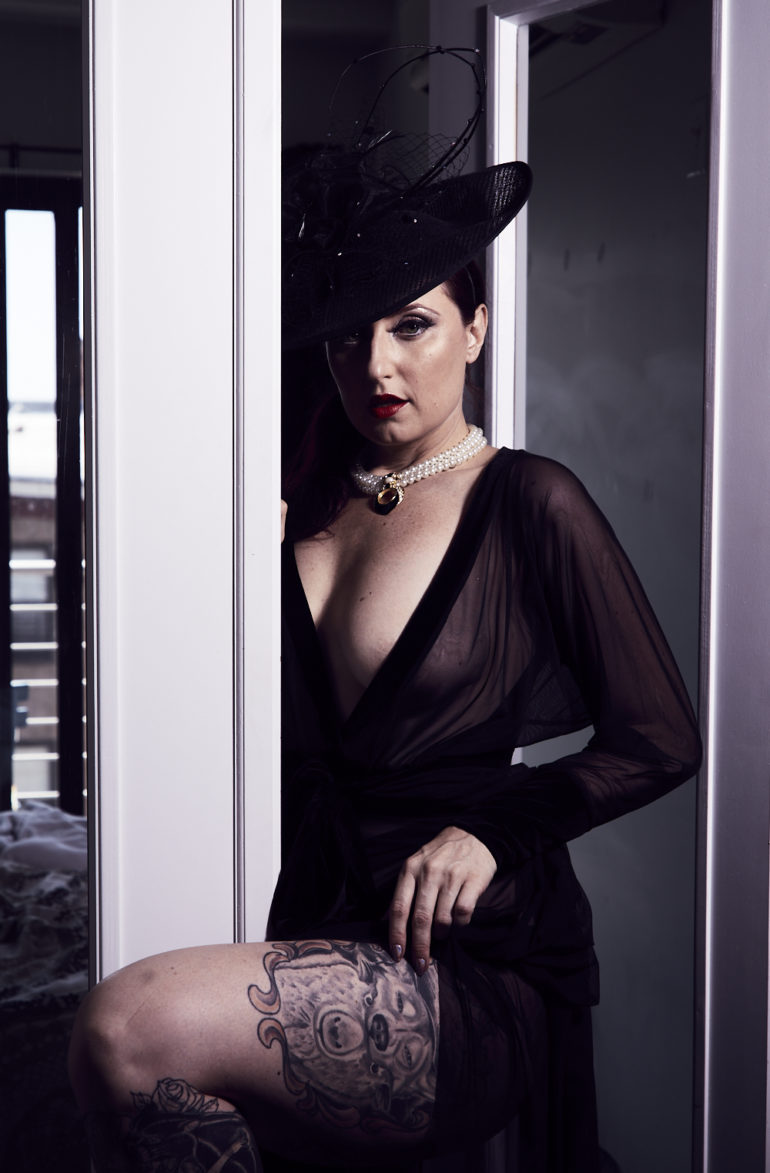
The Interfit S1 did something similar, but I felt that light was too warm. This one is just enough. The other thing one needs to compensate for is how the light modifier they’re using is changing the output. The softbox used has a silver interior, so that’s going to cool the light down a bit. But 5600K sort of helps with negating that and lets you just keep shooting.
Color Consistency
Throughout my shooting sessions, I couldn’t really find anything to complain about when it came to color consistency. All of the images had the same color tones and shades unless I chose to edit them myself. That’s the point here – you can take the images into Lightroom or Capture One, edit and then sync that photo’s edits to the rest of the session and then touch up as you see fit.
Here you can see the skeleton of the softbox. You can tell there is a silver interior and you’ll see how the light falls in the image.
Power
With 360 watt seconds of power output, and when using this light for simple portraiture, I never found myself going beyond 7.0 in terms of power output. That’s a whole lot of light output you can use easily with a large parabolic umbrella or nearly anything else. It can light up most rooms or even bars with no trouble.
Extra Image Samples
Conclusions
Likes
- Compact
- Powerful
- Simple
- Affordable
Dislikes
- Really wish it went down below 4.0 power.
- A configuration to allow us to use an umbrella reflector would be nice
There isn’t a whole lot to complain about the Interfit Honey Badger monolight. It’s small, compact, can be used easily as a constant light, has enough flash output for most photographers, comes with a softbox, and has consistent light output. What more can a studio photographer ask for? Honestly, not a whole lot. And that’s why I’m positively smitten with the Interfit Honey Badger–they’re innovating in a way that Phottix used to.
The Interfit Honey Badger receives five out of five stars. Again, they’re going for $299.


